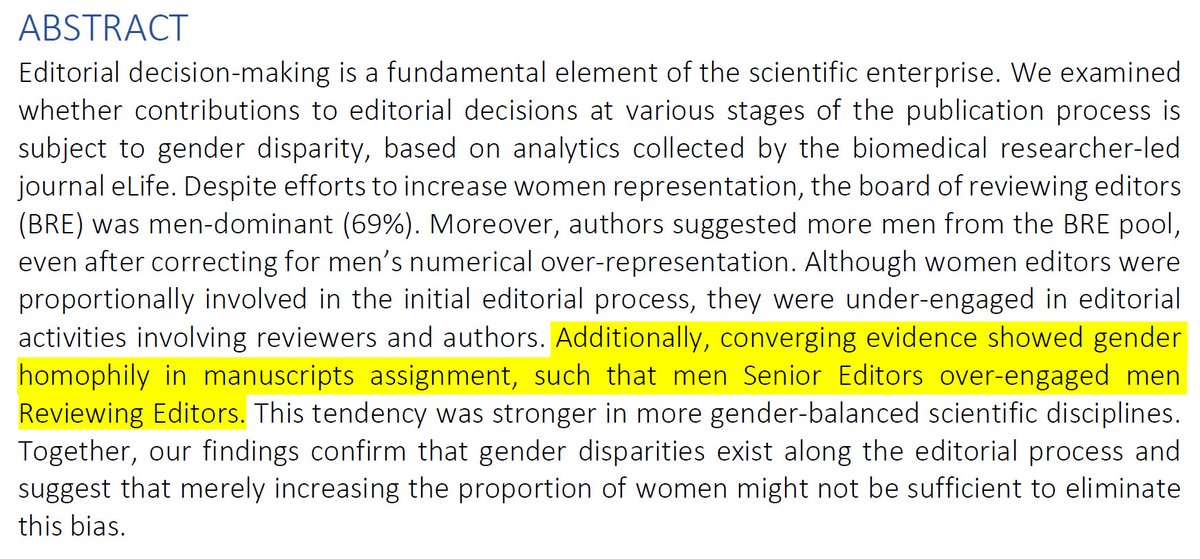
Neuroscientist specialized in vestibular system and spatial navigation - Group leader at the Ernst Strüngmann Institute for Neuroscience, Frankfurt, Germany.
How to get URL link on X (Twitter) App


https://twitter.com/SeidelTal/status/1458777973717360642
 For the context: in the preprint, @SeidelTal and colleagues analyze the distribution of gender through eLife's editorial process. One of their prominent finding is a homophily effect where Senior Editors tend to assign manuscript to Reviewing Editors of the same gender (7-10%).
For the context: in the preprint, @SeidelTal and colleagues analyze the distribution of gender through eLife's editorial process. One of their prominent finding is a homophily effect where Senior Editors tend to assign manuscript to Reviewing Editors of the same gender (7-10%).

 2/ We have (at least) 3 rotations sensors with different dynamics: the inner ear's canals detect acceleration; vision velocity, and graviceptors position (when rotating in vertical planes). The brain also relies on a zero velocity prior. Looks like a job for a #Kalmanfilter!
2/ We have (at least) 3 rotations sensors with different dynamics: the inner ear's canals detect acceleration; vision velocity, and graviceptors position (when rotating in vertical planes). The brain also relies on a zero velocity prior. Looks like a job for a #Kalmanfilter! 


